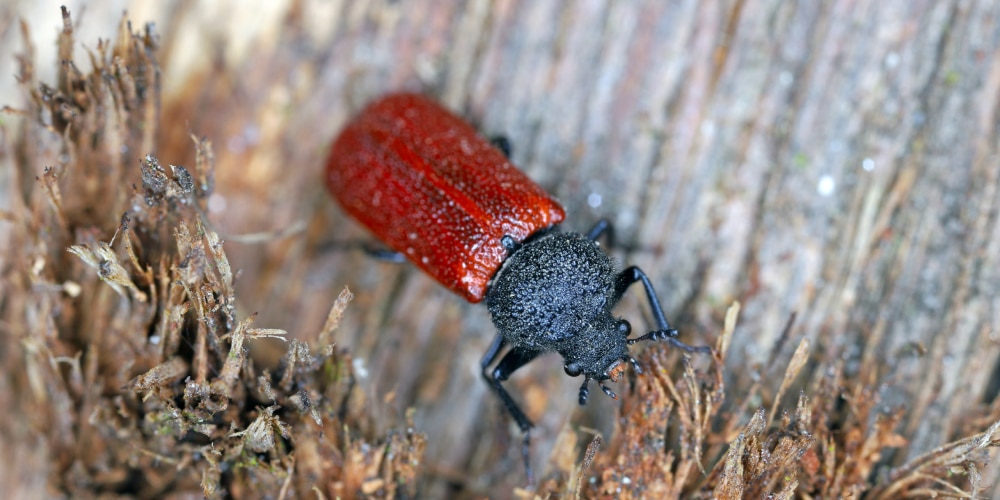
How to Tell if You Have a False Powderpost Beetle Infestation
May 23, 2023
By Daniel Baldwin, BCE, CCFS, CP-FS
False powderpost beetles are difficult household pests to notice, making them capable of causing extensive damage to structural wood. This wood-boring beetle can cause as much damage as termites but typically goes unnoticed far longer, in many cases, until the wood is falling apart. Use this guide to learn how to identify and manage false powderpost beetles and restore peace to your home.
What are false powderpost beetles?
False powderpost beetles are wood-boring beetles that lay their eggs in the cracks and pores of wood. False powderpost beetles get their name from their similar appearance to powderpost beetles but have less destructive habits. The larvae bore into the wood, carving out tunnels. Over time, these tunnels weaken the wood’s structural integrity and, when unmanaged, can lead to collapse and disintegration.
False powderpost beetle adults range in length from 3 to 5.5 millimeters. They have a cylindrical shape and are similar in appearance to other common wood-boring beetles, particularly in the Bostrichidae family. Their body is black or reddish, but their size makes them nearly impossible to identify with the naked eye. The larvae look similar to grubs, with a C-shaped, cream-colored body.
Where do false powderpost beetles come from?
Typically, false powderpost beetles are brought into homes via used tools, furniture, or imported wood. Bamboo is one of the most common sources of false powderpost beetle infestations. They’re drawn to moisture-prone hardwoods and damp spaces, including crawl spaces and unfinished attics.
If false powderpost beetles enter your home from an outside source, they’ll look for areas with high levels of moisture. The larvae can live inside wood for several years before emerging, making a potential infestation hard to detect.
What are the signs of a false powderpost beetle infestation?
You likely have an active infestation if you see false powderpost beetles in your home. But remember: seeing the beetle itself is rare.
It’s more likely you’ll notice a powdery sawdust material or tiny holes in your home’s wood. This sawdust material, called frass, comes out of the boreholes made by the larvae. Frass is the waste made by larvae as they consume the wood. However, many wood-boring beetle pests create frass and holes in wood. It can be difficult to tell the difference between powderpost beetles and false powderpost beetles or other wood-boring pests. The best way to find out which household pest you’re dealing with is by consulting a pest control professional.
What is the best treatment for false powderpost beetles?
Treatment can be challenging for homeowners because false powderpost beetles are difficult to detect. Preventative measures and keeping an eye out for the common signs of an infestation are the best ways to avoid having one. If you’re bringing wooden furniture into your home, check the pieces for holes or frass before introducing them to your indoor space.
Freezing temperatures can eliminate most false powderpost beetles in wood. However, you need freezing temperatures for at least two weeks to see positive results. Keeping your structural wood dry is another way to decrease the possibility of an infestation. If you have unfinished areas prone to excess moisture, consider using a high-power dehumidifier and have the area checked regularly for signs of any wood-boring pests.
Pest control services
The best way to get rid of false powderpost beetles is by hiring a professional pest control service like Hawx Pest Control. We offer safe and affordable extermination for your current problems and preventative treatments to address potential threats before they happen. Our teams focus on the highest-quality results, leading to safer and more reliable outcomes. Call us today for a free estimate to get your pest problem under control and restore peace to your home.
Categories
RELATED POSTS



